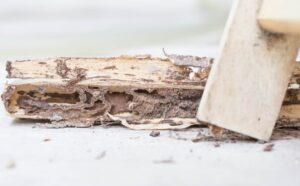How To Identify Termites 101: Learning Its Anatomy
Termites, also known as “silent destroyers”, are small insects that feed on cellulose materials such as wood. They play a significant role in ecosystem balance by breaking down dead plant material, but they can wreak havoc when they infest our homes and cause costly damage.
Today, we will discuss how to identify termites through understanding their anatomy.
Why Is Knowing Termite Anatomy Important?
Understanding termite anatomy can help identify, as different species have distinct physical characteristics. It also helps understand their behaviour and roles within the colony, making it easier to target and control infestations.
Moreover, knowing the anatomy of termites can help prevent prevention methods, as certain features, such as wings, can indicate a potential termite swarm or infestation.
Size and Color
Termites are small insects, with most species measuring between 4-15mm in length. However, some species can grow up to 30mm long.
In terms of colour, termites can vary from pale white to dark brown or black. This variation depends on the termite’s role in the colony and the type of wood they feed on.
Body Structure
Termites have three main body parts: head, thorax, and abdomen.
Their bodies are divided into three sections: the head capsule (head), prothorax (first section of the thorax), and mesothorax/metathorax (second section of the thorax). The abdomen is made up of 10 segments and contains most vital organs, including the digestive system, reproductive system, and circulatory system.
The body structure of termites depends on their role in the colony. For example, worker termites have a soft body with no wings, as they are responsible for finding food and caring for the colony.
On the other hand, soldier termites have a larger head and strong mandibles (jaws) to defend the colony from predators. The reproductive termites or alates have wings for mating and starting new colonies.
Head
The head is where most sensory organs are located. Termites use their antennae to detect chemicals, vibrations, and moisture. They also have compound eyes, which allow them to see light and movement.
One of the most distinct characteristics of termite heads is their mouthparts. These consist of mandibles for chewing food, labrum for holding food, maxillae for manipulating food, and hypopharynx for producing saliva.
Thorax
The thorax contains three pairs of legs that enable termites to move around in search of food and nesting sites.
The prothorax has one pair of legs, while the mesothorax/metathorax has two pairs each. These legs are equipped with tiny claws to help termites grip onto surfaces.
Abdomen
As mentioned earlier, the abdomen is where most vital organs are located. Termites have a complete digestive system, including a crop and hindgut, which allows them to digest cellulose from wood. They also have a complex nervous system and respiratory system that helps them survive in varying environments.
The reproductive termites or alates have an additional pair of wings attached to their second thoracic segment. These wings are used for flying during their mating flights, after which they shed them to become the king and queen of their new colony.
Takeaway
Termites may be small, but they have a complex anatomy that plays a crucial role in their survival and ability to cause damage. By familiarising yourself with their body structure, you can better identify and prevent termite infestations in your home.
Remember, prevention is better than cure when it comes to these silent destroyers! So keep an eye out for any signs of termites and take necessary precautions to protect your home.








